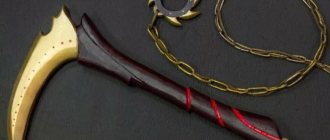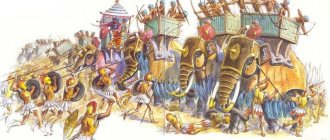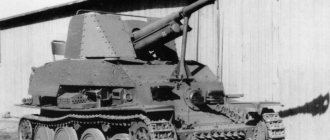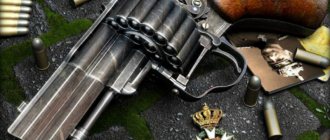If you love intellectual relaxation, then you probably do crossword puzzles or scanword puzzles in your spare time. Of course, this is a very exciting activity that allows you to expand your horizons and demonstrate your erudition.
Just how often have you encountered a situation where you need to guess, for example, a 6-letter word that you have no idea about? Most likely, you will remember more than one such case when, due to such an unfortunate misunderstanding, another scanword puzzle remained incompletely solved. But now you have a unique assistant - the Crossopen.ru !
Answers to scanwords on VKontakte, Odnoklassniki and many others
What is our service?
It will replace you with many dictionaries, encyclopedias and well-read relatives with whom you previously consulted if you were unable to find the right word on your own. With Crossopen.ru you can easily solve a crossword puzzle of any difficulty level using an intuitive search form.
The main advantage of our service is a huge database of words and questions for which you can find the appropriate answer. A user-friendly interface will provide you with a quick search for words of 3, 4, 5 or more letters . It is important to note that at the same time you can clarify your request by indicating the subject, as well as the letters you already know - the so-called word search by mask .
Let's look at the interface using a clear example: you need to find out the poet's last name, which has 6 letters, and the third is “sh”. You set up a search for 6-letter words, click on the corresponding empty cell and insert the letter you know, after which you specify the keyword - “poet”. As a result, you get various options, one of which is sure to be correct. This way you can find any answers to crossword puzzles , because it’s very simple!
You can solve any crossword puzzle!
Our service is absolutely free, and you can freely use it to search for answers to any crossword or scanword puzzle, both from the newspaper and on the Internet. For example, our database contains almost all the answers to Odnoklassniki and VKontakte crossword puzzles, which will allow you to solve them quickly and with pleasure.
Plus, you can create these kinds of brain teasers yourself! To do this, just list the words in alphabetical order and choose the options that suit you with descriptions so that the resulting crossword puzzle is interesting and educational.
So if you like to solve crosswords, the Crossopen.ru will become a convenient and reliable assistant for you. Spend your free time doing your favorite activity with pleasure!
Armor of ordinary warriors in photographs and paintings
"The Battle of Auray" from the Chronicles by Jean Froissart. National Library of France, Paris. We look at the infantrymen and what do we see? That some have armor on their legs and arms, while others only have a helmet and, most likely, chain mail under their clothes or a jacket - a jacquet. Only two warriors, armed, in addition, with terrifying-looking battle axes with a jagged butt, have shields. The fallen man-at-arms is stabbed by his opponent to the rondel with a dagger.
The Persian and the Lydian and the Libyan were in your army and were your warriors, they hung a shield and a helmet on you.
Book of the Prophet Ezekiel 27:10 Military history of countries and peoples.
In the previous material, we mainly talked about the chain mail of ordinary warriors of the 14th–15th centuries. That is, the end of feudalism as such, when the New Age was already looming on the horizon. It was then that the good old chain mail was replaced by the brigandine and jacques - a short sleeveless jacket (jaque or jacques). A semi-rigid brigandine usually consisted of many small overlapping iron plates mounted on rivets. A sleeveless canvas doublet was worn underneath it, and the outside of the brigantine was covered with decorative fabric. In the 14th and 15th centuries, brigantines were supplemented with chest protection, often in the form of two L-shaped plates connected at the front, and from the mid-15th century, some brigantines began to be equipped with a plate to cover the back.
Bartute, also called the “Corinthian helmet” in the Renaissance, to which it was in fact very similar. A godsend for warriors with a beard! Made by Pietro da Xtello (1469–1486) of Brescia, Italy, around 1470. Weight: 2.665 kg. Height: 27.5 cm. Diameter (internal): 22.5 cm. Wallace Collection, London
French infantry 1337–1360: on the left is a city militiaman with a massive wouge on his shoulder, and he also has a basilard sword and a dagger. The helmet on the head is an “iron hat”; the wounded man in the center had somehow acquired plate coverings for his legs. Armed with a guizarma and a short falchion. The helmet is a servile. The armor is chain mail worn over a quilted aketon. A white cross is sewn on the chest - the identification mark of those who fought for France; The crossbowman carries everything he owns with him and is clearly trying to sell himself at a higher price, since he has three crossbows and a whole box of arrows with him. Dagger - basilard. The shield, a “sausage” on a leather arm, was convenient precisely for such shooters. Rice. Angus McBride
Jacques is a cheaper "soft" armor that was originally probably just a reinforced purpoin - a jacket lined with pieces of fabric or made of several (up to 30) layers of material. To make them, in 1385 an order was received from Paris for 1,100 pieces of canvas. Although the jacque was considered armor for ordinary warriors, the top layer for them was often made of colored fabric with decorative embroidery. Other 15th-century jackets were reinforced with chain mail or internal horn or iron plates. Some long-sleeved items were equipped with chains of large links attached along the sleeves to enhance protection.
The development of those parts of armor that were intended to protect the arms and legs was less rapid, although more sophisticated. Plate armor for the arms became noticeable earlier than armor for the legs, since the latter was originally worn under chain mail stockings (chausses). Full leg armor made of iron began to appear in France only around 1370 - about the same time as elsewhere.
French infantry 1360–1415: on the left is a royal crossbowman with a shield bearing the coat of arms of Jean de Enges, commander of the crossbowmen of France. Dagger - basilard. The helmet is a chapel. On top of the chain mail on the quilted gambizon there is also a quilted purpoin; the city militia (in the center) is armed with a variety of weapons and, accordingly, he has the same “prefabricated” armor; a light infantryman of the “brigand” from the south of France is dressed in “brigand” armor, lined with plates. The helmet is a bascinet, but very simple, and there is a shield-buckler on the arm. Rice. Angus McBride
The simplest bascinet helmet from Northern Italy, ca. 1450–1470. Height: 23.5 cm. Weight 2.041 kg. Wallace Collection, London
Bevor. Since the bascinet initially did not have chin protection, just as the chapel did not have it, a special “chin guard” was invented to protect the chin and neck. Master: Matthes the German (c. 1484 – c. 1510), Germany, ca. 1480 g. Weight: 1.1 kg. Wallace Collection, London
The bascinet was the most common helmet of French men-at-arms in the 14th century. The most widespread were bascinets of a conical shape (and later with a rounded one) and a visor, in which there were slits for the eyes and numerous holes for breathing. The chain mail aventail was often called "kamay" (carnail), and the leather lining was apparently called "hourson". A semi-rigid or hard chin guard could sometimes be added to the aventail, and later it began to be attached directly to the bascinet with rivets. Thus, the result was a “large bascinet.”
Another form of light helmet came to France from Italy around 1410. It was a salad, which could also be equipped with a small visor. The old chapel (chapeau de fer) was also popular among many infantrymen.
Bascinet helmet from the collection of the Museum of Medieval Warfare at Castelnau Castle in Périgonne, France
Considering the threat posed by English longbowmen, it is not surprising that horse armor developed significantly in the 14th century.
Early chamfrons covered only the front of the horse's head, although some continued on to the neck. The new forms that appeared in the 14th century were larger, not only covering the back of the head, but had a convex protrusion over the nose and cupped holes that covered the eyes. The increased need for men-at-arms to be prepared for combat on foot led to the fact that the shortened infantry spear was replaced by the halberd - a fearsome weapon of the 15th century, with a heavy shaft partially protected by a metal attachment at the top, which was connected to a blade, a war hammer and a sharp spike .
French infantry 1415–1453; on the left is a French archer Franc-Archer (“free archer”) with the coat of arms of the city of Poitiers on his clothes and clearly “ripped off” some noble lord, otherwise where did he get such an expensive salad helmet, covered, most likely, with velvet with gilded dyes. Armed with a heavy falchion cleaver; in the center - an archer clearly from the peasants, who did not have time to get hold of some “junk”; the infantryman on the right is armed with a bull's tongue and a sword. Shield - buckler. Dressed in chapel, aubergeon chain mail, quilted jacques and armor for the legs, that is, he is fully equipped for battle. Rice. Angus McBride
Anonymous author of the essay “Military Costumes of the French in 1446” (Du Costume Militaire des Français en, 1446) provided us with exceptionally detailed information about the equipment of the “lance” - the basic cavalry combat unit of that time:
“First of all, the aforementioned men-at-arms, when preparing for battle, donned full white armor. In short, they consisted of a cuirass, shoulder pads, large bracers, leg armor, combat gloves, a salad with a visor and a small chin guard that covered only the chin. Each warrior was armed with a spear and a long light sword, a sharp dagger hung to the left of the saddle, and a mace.”
Salad with a visor. The classic salad did not have a visor, which was its charm: if you slide it to the back of your head, it opens your face; if you slide it over your face, you look through the “visor” slit. But over time, “varieties” appeared, including those that received a rising visor. This one was made in Germany around 1490. Height: 22.5 cm. Length from visor to tip of “tail”: 48.5 cm. Weight: 2.26 kg. Wallace Collection, London
Artillerymen 1430–1453: on the left is an artilleryman wearing a salad (sallet) helmet, that is, at least only one head, but everything is protected; the artilleryman in the center serves the multi-barrel ribaldecken. He wears chain mail, a chaplain's helmet, a cuirass on his chest, and plate coverings on his arms and legs. The “shot” was valuable, that’s why he dressed up like that! The shooter on the right has a deep chapel on his head with a slit for the eyes. Rice. Angus McBride
“Each warrior had to be accompanied by a carnivore, having a salad, leg armor, a haubergon, a jacque, a brigandine, armed with a dagger, a sword and a vouge or a short spear. He was also accompanied by a page or varlet, similarly armored and armed with one or two weapons. The archers had armor for the legs, a salad, a heavy jacket or brigandine lined with canvas, a bow in their hands, and a quiver on their side.”
A young aristocrat needed from 125 to 250 Tours livres for equipment, which was equal to 8 or 16 months' salary for an ordinary man-at-arms, respectively. Of course, we are talking about the best equipment, but even ordinary equipment was not cheap. The salad cost between 3 and 4 Tours livres. A Jacques, corset or brigandine could cost 11 livres. A full set of such armor and weapons cost about 40 livres, and the cost of equipment for the entire “spear” could range from 70 to 80 livres.
On the other hand, a dagger of poor quality, with which most franc-archers were armed, cost less than a livre, and a sword of poor quality cost a little more than one livre. An anonymous text from 1446 stated that
“there was another category of warriors, protected only by chain mail-haubergon, lettuce, combat gloves, leg armor, armed with a dart with a wide tip, which was called the “ox tongue” (langue de boeuf).”
Crossbows continued to be produced in large quantities. In the Clos de Galais they were produced in batches of 200 pieces. Even more was the release of ammunition. To produce 100,000 crossbow arrows, ten birch trunks and slightly less than 250 kg of iron were required.
The timing of the introduction of steel bow crossbows into general use remains controversial, although such crossbows may have already been used in combat around 1370. Despite, or perhaps thanks to, competition from firearms, crossbows gradually became powerful weapons that combined great destructive power with light weight and no recoil. This weapon did not require long training from the owner. Although the use of steel in the design made the crossbow more compact, neat and made it possible to reduce the length of the bowstring to 10–15 cm, it still loaded very slowly and became increasingly complex in design. To tension the crossbow, a number of mechanical devices were required - a stirrup, a “goat's leg” and, finally, a hand winch with a tension hook and a double crank.
The Salad from Northern Italy even has an accordion visor and, apparently, was no longer designed for an infantryman, but was made for a knight, who also wore such helmets. Around 1500–1520 Height: 26.4 cm. Weight: 3.25 kg. Wallace Collection, London
"Battle of Saint-Clemente" (1358) from the Chronicles of Jean Froissart. National Library of France, Paris. English archers (right) fire at French infantry (left)
Well, how did all these warriors deal with morality?
Interesting question, isn't it? Otherwise we are all armor, yes armor...
And things were really bad with her. No matter how bravely a commoner fought, he still remained a commoner in the eyes of the nobles, who were proud of entire generations of their noble ancestors.
Painted lettuce from Germany. Around 1500. Diameter: 23 cm. Weight: 2.43 kg. Wallace Collection, London
War at sea 1337–1415: on the left - Jean de Betancourt (coat of arms on a shield) - a French navigator and participant in the Hundred Years' War, is equipped for battle with the help of two sailors - clearly Spaniards, dressed in Castilian fashion. Near the shield lies his bascinet helmet and plate gloves. The Spanish sailors in the center and on the right are wearing the simplest form of helmets and chain mail, and on top of it is leather armor made from sole leather boiled in oil.
Exactly the same bascinet is in the collection of the Wallace Collection. Made in Milan, around 1390–1410. Height: 26 cm. Width: 37.4 cm. Weight without visor: 2.005 kg. Visor weight: 0.82 kg. Aventail weight: 1.24 kg.
However, the heroism of the knightly elite manifested itself mainly in tournament duels and quixotic exploits, and not in real battles in which simply no one wanted to die. Well, “the younger ones took their cues from the older ones.” No wonder in 1369 a certain Eustache Deschamps complained that
“soldiers rob the country, the concept of honor is lost, they like to be called men-at-arms (gens d'armes), but they scour the country, destroying everything in their path, and ordinary people are forced to run and hide from them. If a soldier has walked three leagues in a day, he believes that he has done his duty."
He also complained that the knights did not maintain their military skills, were idle, dreamed of wine and luxurious clothes, and knighted boys aged ten to twelve who had not earned this title on the battlefield.
In a word, there was a complete corruption of morals. Always had...
To be continued…
↑ Sword as a symbol
Let us put aside all sorts of fabrications and conjectures on the topic of history, and therefore we will calmly and thoroughly tell our respected readers about how Russian military art made enemies tremble from the Slavic sword.
Since ancient times, the sword has been a privileged weapon in Rus' and those who carried it, as a rule, had a high social status. The sword consisted of a wide strip, sharp on both sides, that is, a blade, and a handle, the parts of which were called: apple, black and flint. Each flat side of the blade was called “golomen”, or “golomya”, and the points were called “blades”.
One wide or several narrow notches were made on the holomen. The blades were made of steel or iron, the sword was placed in a sheath upholstered in leather or, later, velvet. The scabbard was made of iron and sometimes decorated with gold or silver notches. The sword was hung from the belt using two rings located at the mouth of the scabbard.
The sword is the main weapon of the Russian warrior-combatant, a symbol of princely power and the military emblem of Ancient Rus'. Russian chronicles and other written sources are replete with references to the sword. Swords are no less widely represented in archaeological material. The bulk of swords, like other weapons, have come to us since the 10th century. The burials of the warrior-princes Igor, Svyatoslav and Vladimir Svyatoslavich included a rich set of weapons and other military equipment.
The Old Russian sword is a chopping weapon: “let them not defend themselves with their shields, and let their swords cut them” or “let them cut mercilessly with a sword.” But some expressions in the chronicle, although later, suggest that the sword was sometimes used to stab an enemy: “those who call to the end will be pierced with a sword.” The usual length of a sword of the 10th century was about 80–90 cm. The width of the blade was 5–6 cm, thickness 4 mm.
Along the blade on both sides of the blade of all ancient Russian swords there are fullers, which served to lighten the weight of the blade. The end of the sword, not designed for a piercing blow, had a rather blunt point, and sometimes was even simply rounded. The pommel, hilt and crosshair of the sword were almost always decorated with bronze, silver and even gold. The chronicle contains the expression “draw your sword.”
A warrior-combatant with a certain income could afford such an expensive weapon. Although, the sword could also be obtained in battle, taking it from a fallen warrior. By the way, this is exactly how our enemies literally hunted for Russian swords – the quality of forging of every Russian sword was so highly valued! It even got to the point where “weapon hunters” were digging up the burial places of Russian warriors in order to get a sword!
A sword has always been the best gift for a man of the military class. There is a legend, however, it was reflected in the “Tale of Bygone Years”, how the Slavs “gifted” a sword to the Khazars who came to Rus' for tribute. The Khazar envoys offered the glades to pay tribute from the “smoke” (from each house) with what was valuable. Our people acted as described in the chronicle: “The glade was blown away and the sword was blown away from the smoke.” The Khazar elders, having received such gifts, decided to go look for other tributaries.
Why did this happen? It is unlikely that each house gave the enemies such a valuable gift - a sword, but, most likely, the Khazars were sent tribute not “out of the blue,” as the chronicler writes, but in the amount of only a few pieces, but of excellent quality.
The Khazars, being quite good warriors themselves, were able to appreciate the quality of the swords sent, and realized that they had received locally forged weapons. This means that the people from whom they are going to take tribute are excellent at making weapons. And if so, then it’s not easy to defeat such people!











